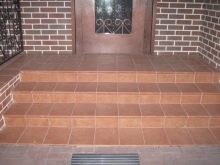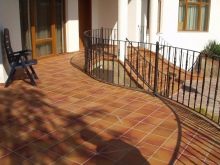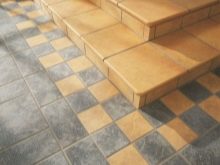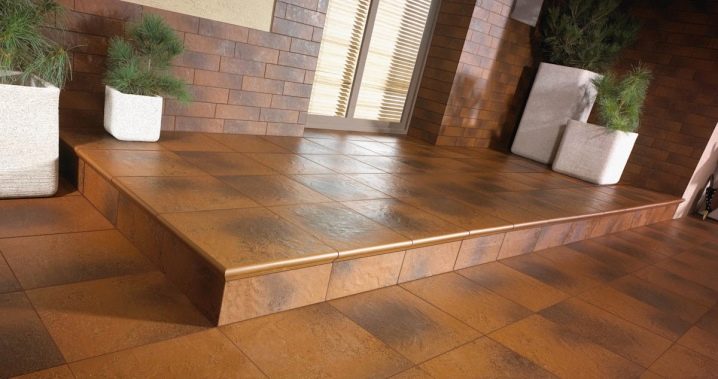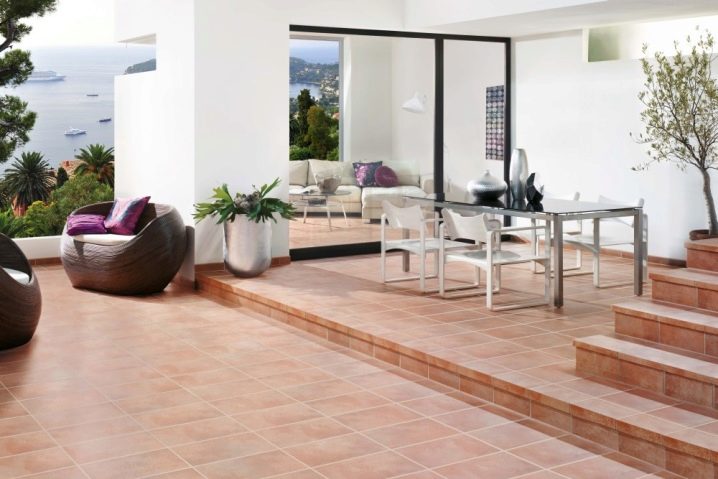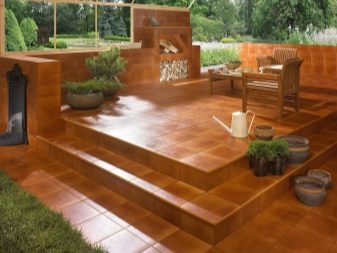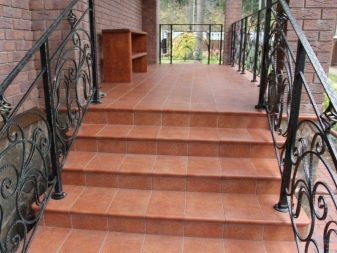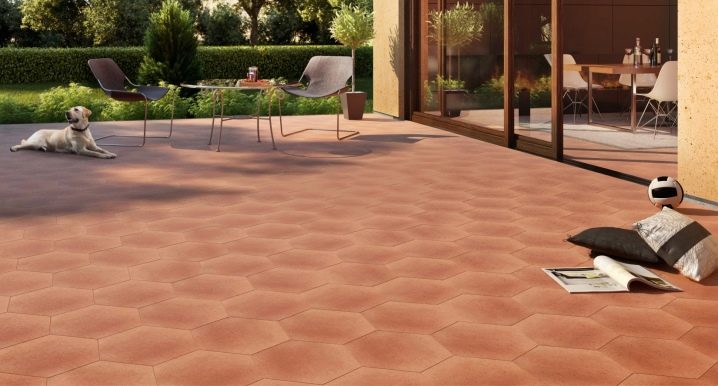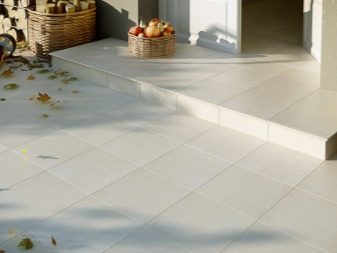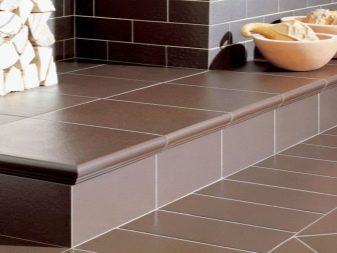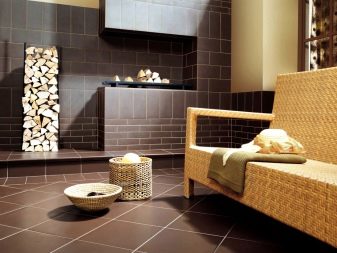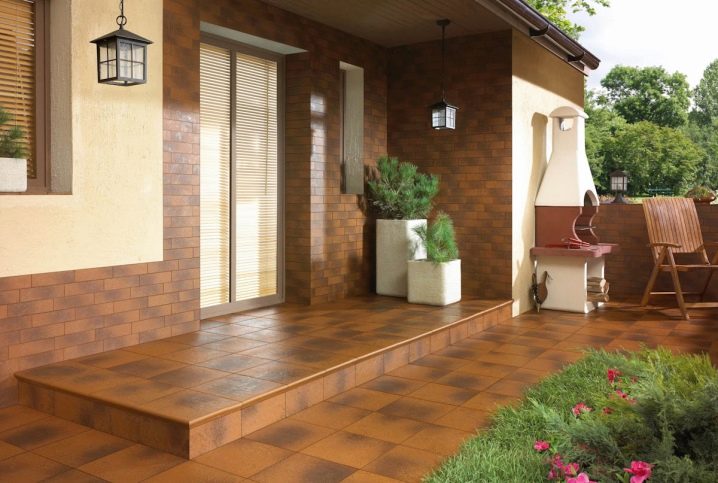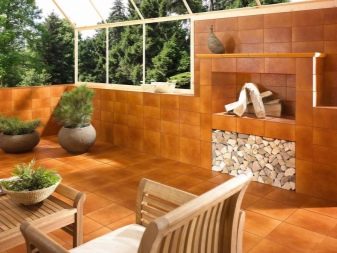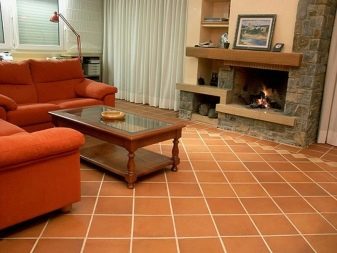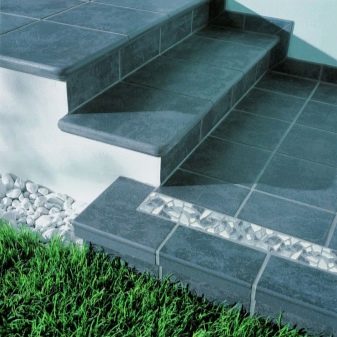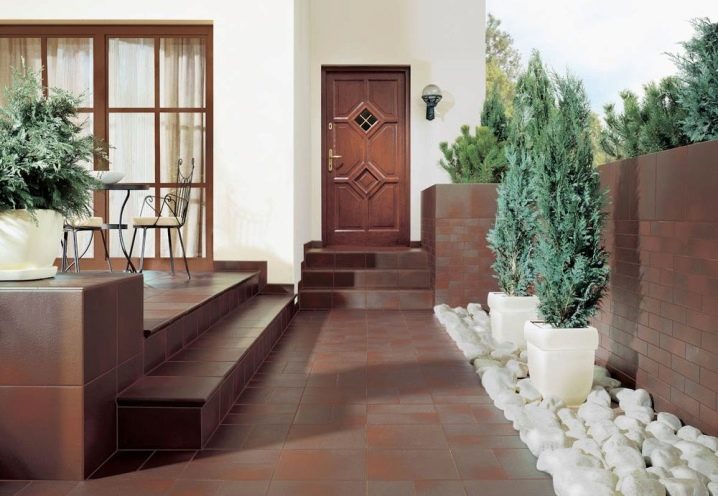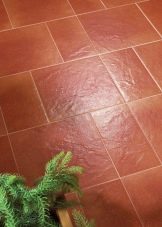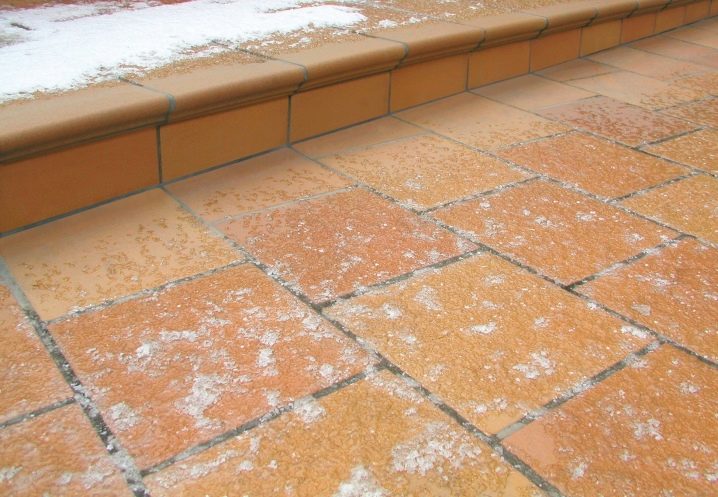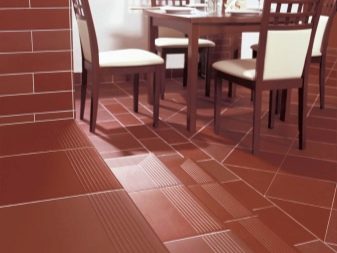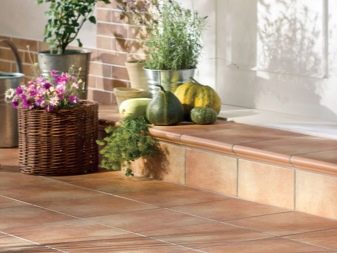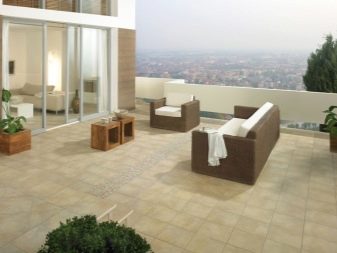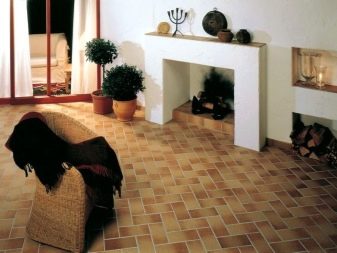Clinker floor tiles: features and types of coverage

Tiled materials are widely used when facing vertical surfaces and paving floors. A special role in this group of materials is assigned to the clinker tile, since it meets the increased requirements of wear resistance, durability, and is characterized by an attractive appearance.
The brick tile is less bulky, more reliable and convenient in installation alternative to a brick. That is why, quite often, it imitates brick surfaces and has dimensions similar to it.
The product owes its characteristics to the production technology. It is based on refractory clay, supplemented with impurities of carbonate and salts.To improve performance (increased frost resistance and strength), plasticizers and modifiers are added to the solution in order to provide a certain shade - metallic oxides.
Further, the composition is given the required shape, and the future clinker is baked at a temperature of 1200-1400 C for almost 48 hours.
Special features
The coating based on baked clay has a number of advantages, each of which is not unusual for this type of coating, but collectively, we can speak of clinker as a unique material.
Among the features are the following:
- Increased strength. The material has a higher density compared to brick. This means that its strength is higher: it allows the use of clinker for interior and exterior decoration. Thicker tile types have the maximum density, their thickness is up to 30 mm. The last indicator is indicated by a marking - a footprint with a numerical factor on the inside of the material and in the accompanying documents.
- Improved wear resistance. These values are due to the thickness of the material and its porosity.
There are 5 types of classes for determining the durability of the clinker floor:
- defaults to increased wear rates;
- suitable for rooms with reduced maneuverability: floors of bathrooms, storerooms;
- it is mounted in areas of increased load on the floor in residential areas: living rooms, bedrooms, halls;
- It finds the same application as the previous one, but already in office premises, as well as in the floors of shops, cafes, and lining of access roads;
- It is considered the most durable. In Russia, the coating is used for facing the floor in buildings of airports and train stations.
- Slip coefficient. Depending on the purpose of the room, a material is selected with a certain coefficient. So, for rooms of high humidity for tiles, R11 – R 13 is suitable for exterior coatings. In bedrooms and similar rooms, the R10 coefficient is sufficient.
When buying flooring for wet rooms - washing, swimming pools - you should also pay attention to the values of wet tile friction. Well, if it is as high as possible.
- Frost resistance. This figure reaches F300, that is, withstands up to 300 cycles of freezing and thawing. It is important only for the "brick" that is used outside the room.It is necessary to choose a concrete look from climatic conditions of its operation.
- Resistance to chemicals. The clinker is resistant to acids and alkalis, therefore, spilled gasoline or diesel fuel, cleaning with aggressive detergents will not become a problem.
- Hygiene. Clinker is a low-porous material, and therefore bacteria and microorganisms do not reproduce in it, and dirt does not accumulate. This feature makes tile the best option for the kitchen, bathroom, nursery. The material is not afraid of wet cleaning, disinfection, cleaning with detergents. The only thing that is unacceptable is to use hydrofluoric acid and products based on it.
- Good water repellency. Their average is 2-2.5%, so the surface does not absorb oily liquids, frost does not form on it in winter. At the same time, too high moisture-repellent characteristics of the material can cause a longer installation, since it takes more time for the material to absorb fixing compounds (glue, cement mortars).
- Long period of operation. As a rule, manufacturers guarantee a 50-year lifespan of clinker, and real user feedback confirms this data.
- Thermal conductivity.Like any tile, the clinker version is considered cold enough. However, this disadvantage is easily leveled by high-quality insulation or using a heated floor system.
Polyurethane foam and materials based on it can be used as a thermal insulation material.
Dimensions and thickness
The dimensions of the product are due to its need to simultaneously comply with a steady stationary load and dynamic bending load. This is what determines the ratio of the size and thickness of building material.
Depending on the size of the clinker, the following types of it are distinguished:
- Square tile - the most "running" models have a size of 200 * 200 mm, 300 * 300 mm, 330 * 330;
- Rectangular tiles - materials whose size repeats the parameters of the length and width of a brick - 115 * 240 mm, as well as tiles 120 * 200 mm, are popular.
The thickness is determined by the place of application of the tile:
- in living rooms, including bathrooms, a material thickness of 8–12 mm is sufficient;
- hall, kitchen require a thicker, up to 15-16 mm thick material;
- facing of steps, street terraces and platforms is conducted using clinker, which thickness reaches 18-20 mm;
- for public and industrial facilities characterized by high traffic and loads, tiles of 30 mm are used.
Choosing a tile of great thickness, you should make sure that the base of the floor will withstand a similar load.
For example, industrial acid-resistant material can reach 50 kg / sq. m. The best basis for it will be concrete.
Appearance
Aesthetic features of clinker tiles depend on the type of surface treatment and features of the added pigment modifiers.
Depending on the decorative properties, they distinguish the following types of material:
- Technical - leading for it are performance, tile unpainted, rough.
- Smooth - the name of the material is due to the similarity with a smooth ceramic brick. Despite this, it has a good grip, so it is even suitable for laying in the bathroom, pool.
- Structured Is a group of clinker materials, combining both rough rough clinker and stylized antique brick, antique clutch and similar variants. Their distinctive feature is a special roughness, structuredness of the surface.
- Glazed tile is almost mirror-smooth, therefore it is not often used for flooring or it is combined with other types of coating. It can have many shades, as well as imitate wood and stone surfaces.
Some manufacturers emit only glazed (attractive aesthetically) and unglazed clinker. Subsequent differentiation can be carried out in each clinker group. For example, the glazed or structured versions are characterized by different colors and imitations. The same groups of materials, depending on the purpose, may have a flat surface or be equipped with small nozzles that protect against falling, if we are talking about clinker for the steps.
There is also an anti-slip type of tile, on the surface of which protrusions are applied, there is a wafer coating. Clinker is used in industrial premises, swimming pools, when paving streets.
Tips for choosing
Brick tile - the universal floor material possessing tremendous operational qualities. This is due to its relatively high cost - 20-30% higher than the price of the most popular materials for the floor.
It should be understood that the too low price of clinker means a deterioration in its performance. Price reduction is possible when using low-grade raw materials - crude clay with a large number of impurities. From such a framework will not work high-quality products.
When choosing a tile, you should take care of its professional installation in advance. After all, independent inept attempts to install the tile, especially on polystyrene foam, can turn into material damage and a waste of money.
Despite the long service life, picking up the tile, it is better to purchase it with a small margin. This is due to the fact that in case of damage to the material, it will not be easy to replace it with the same (the same series and shade). Problems can be avoided if you keep some stock of tiles.
Review the clinker tiles in the next video.
